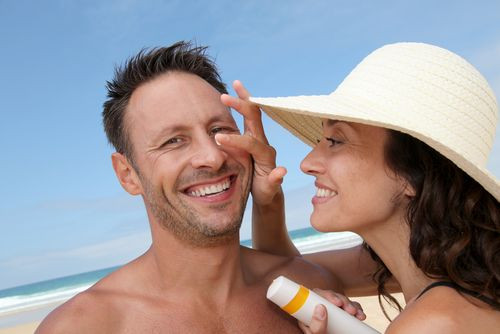Sunscreen Does Not Protect Against Deadliest Skin Cancer: UV Light Accelerates DNA Damage Even With SPF 50

Wearing sunscreen has always been synonymous with “sun safety” and “skin cancer protection,” as it prevents the sun’s harmful ultraviolet A (UVA) and ultraviolet B (UVB) rays from causing DNA damage. When it comes to broad-spectrum protection, a rule of thumb is: the higher the sun protection factor (SPF) the better. But new research is challenging the effectiveness of sun creams altogether. According to a study published in the journal Nature, UV light can sneak past sunscreen and cause long-term DNA damage to “anti-UV” genes, even with the use of an SPF 50 sunscreen.
This new research suggests sunscreen does not protect against the deadliest form of skin cancer — malignant melanoma — and should be used as a part of a sun safety regimen, not by itself. UV light targets genes, like the “guardian gene” called tp53, which normally helps protect us from its damaging effects. Excessive UV radiation can produce genetic mutations that can lead to skin cancer, since it damages the skin’s cellular DNA. “UV light targets the very genes protecting us from its own damaging effects, showing how dangerous this cancer-causing agent is,” said Professor Richard Marais, the lead investigator on the research, of Manchester University, in PLOS Blogs.
Marais and his colleagues from Manchester University and London’s Institute of Cancer Research sought to examine how UV light causes cancer at a molecular level to understand how effective sunscreen can be with skin protection. The researchers expressed mice with a faulty BRAF gene — known to increase the risks of developing melanoma. After a month, the backs of these mice were shaved, with half of each back protected with an UVR-protected cloth. The other half was exposed to a low dose of UVR enough to mimic mild sunburns in humans.
Within a 24-hour period, the mice experienced a change in the tp53 — a gene that helps suppress tumors — and had sunburn cells present in the UVR-exposed skin. After seven days, the skin became rough to the touch, and thickened. This and other UVR-induced changes occurred while the exposed skin darkened. All of the BRAF-induced mice who were exposed to UVR, developed tumors, as 98 percent were formed in the area exposed to UV light.
These findings emphasize the important impact of tp53, which usually activates the release of protein that protects against UV. The researchers noted UV radiation targets the very thing that defends the skin, which sunscreen cannot protect against. Sun cream can only help limit the immediate effects of UV light on the skin to stop sunburn. “But sunscreen does not protect the skin completely — enough UV light sneaks past to cause long term damage to the DNA,” Marais said.
The cosmetics industry claims it has never said sunscreen could stop cancer. Dr Chris Flower, director general of the Cosmetic, Toiletry and Perfumery Association, told the Daily Mail. “We can’t use the term ‘sunblock’ or anything that suggest there is 100 per cent protection. We can’t say total protection, the strongest term we can use is ‘very high’ protection” The Food and Drug Administration requires sunscreen to protect against all types of sun-induced skin damage labeled "Broad Spectrum" and “SPF 15” (or higher) on the front. Although higher SPF values indicate higher levels of overall protection, sunscreen alone will not suffice when it comes to sun protection.
The Skin Cancer Foundation advises everyone follow its comprehensive prevention guidelines, which recommend wearing sunscreen, along with practicing other sun safety habits. We tend to think we are invincible when we apply sunscreen onto our body every two hours in its highest SPF form, but the longer we’re out in the sun, the more we’re increasing our UV ray exposure. Wearing a hat, loose-fitting clothing, and seeking shade when the sun is at its highest point are some tips to keep in mind, and can help decrease the 3.5 million skin cancers cases diagnosed annually.
Source: Cook M, Dhomen N, Ejiama S et al. Ultraviolet radiation accelerates BRAF-driven melanomagenesis by targeting TP53. Nature. 2014.



























